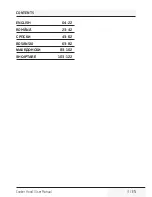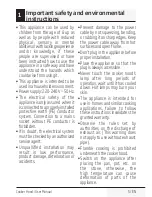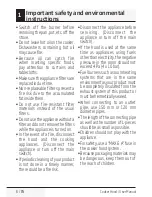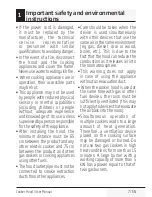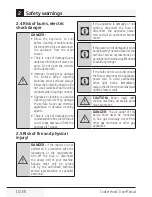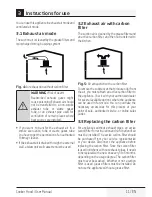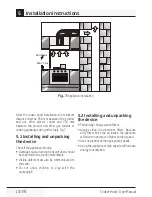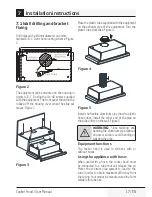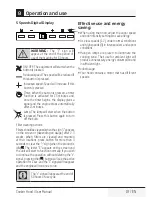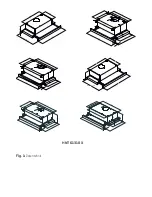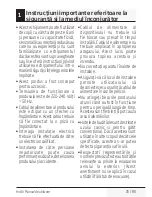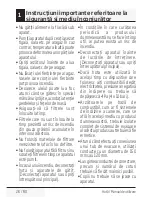
Cooker Hood / User Manual
11 / EN
3
Instructions for use
You can use this appliance in exhaust air mode and
ventilated air mode.
3.1 Exhaust air mode
The suction air is cleaned by the grease filters and
is discharged through a piping system.
Fig. 4:
Air exhaustion without carbon filter
A
WARNING:
Risk of death!
Reabsorbed exhaust gases might
cause poisoning. Exhaust air should
not be transferred to a non-smoke
exhaust tube or waste gases
tube, or an exhaust pipe used for
ventilation of certain places where
heat sources are installed.
•
If you want to transfer the exhaust air in a
smoke evacuation tube or waste gases tube
you have to get the permission of an authorized
chimney cleaner.
•
If the exhaust air is drained through the external
wall, a telescopic wall cassette must be used.
3.2 Exhaust air with carbon
filter
The suction air is cleaned by the grease filters and
an active carbon filter, and then re-transferred to
the kitchen.
Fig. 5:
Air exhaustion with a carbon filter
To remove the substances that produce odor from
the air, you must attach an active carbon filter to
the appliance. Check with your authorized dealer
for several available options where the appliance
can be used in fan-mode. You can purchase the
necessary accessories for this process at your
point of sale, authorized service, or online sales
outlet.
3.3 Replacing the carbon filter
For appliances without exhaust pipes, an active
carbon filter for recirculation and re-filtration of air
must be installed. The active carbon filter should
be purchased from your service representative
or your dealer. Disconnect the appliance before
replacing the carbon filter. Since the carbon filter
is used in kitchens without exhaust pipes, it needs
to be replaced with a new one every 3 to 5 months,
depending on the usage degree. The carbon filter
must never be washed. Whether or not a carbon
filter is used, grease filters must be installed. Do
not use the appliance without a grease filter.



